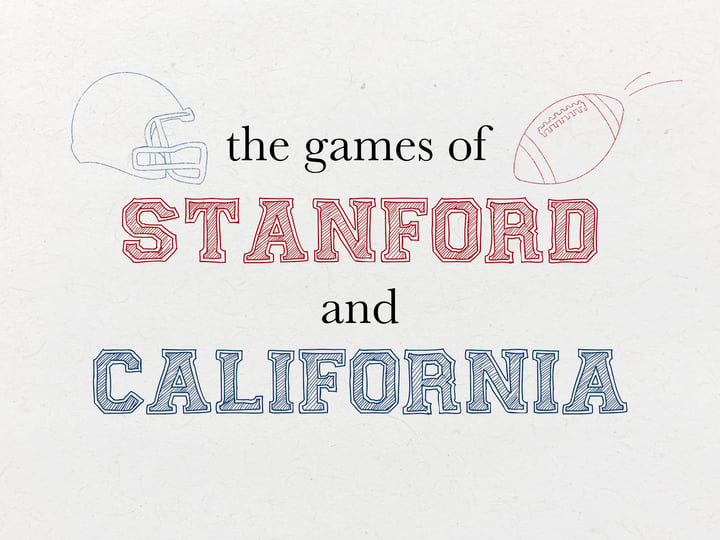In the spring of 1892, Stanford and the University of California, Berkeley came together for their very first football game as rivals. This historic moment, along with later encounters between Cal and Stanford through 1900, are recorded in Jack F. Sheehan and Louis Honig’s book “The Games of California and Stanford.”
In 1892, seven years after Stanford was founded, the University’s football team was in its infancy — playing an incomplete season in the spring quarter and setting off strong in the fall. Meanwhile, Cal had established its sports teams seven years prior.
The very first game between Cal and Stanford was played on March 19 at Haight Street Park in San Francisco. Sheehan and Honig captured the “peculiar sense of bottled-up American excitement which thrilled the 8,000 people who wore the cardinal and blue and gold that day.” This sentiment is so familiar to modern readers; nothing compares to the energy brought out by a good, traditional game of football.
Sheehan and Honig laid out the second game between Cal and Stanford as a touch-and-go from the beginning: Stanford ended the first half with a 6-0 lead, but Cal quickly caught up. According to the authors, “If the first half was excitement the second half was football ecstasy” to the full audience. You don’t need to be a fan of the game to be called to that thrill. The close game ended in a last-minute tie, with a score of 10-10.
Even for those who are not particular fans of the sport, “The Games of California and Stanford” intrigues with vivid depictions of the two universities’ dynamic history of rivalry.
The Thanksgiving Day game of 1894 was a test of endurance, with Stanford’s team peaking early on with a touch-down and trying to fend off Cal for the rest of the game. Then, in the fourth quarter, Cal’s team made a break for the end zone, narrowly missing the score when they dropped the ball. Had Cal made the touchdown, the game would have ended in the third consecutive tie between the two teams. This narrow victory made “Stanford burst the heavens in shouts of victory.”
Sheehan and Honig impressively translated the sensation of every game onto the page through photographs and words. No two episodes were alike, and the book recreates the mood of each one by setting the scene with contextual and visual details. Readers could clearly visualize those “spectacular” or “picturesque” days many years ago.
I found the most striking moments in the authors’ descriptive language and use of imagery to depict the cheers from the spectators, the effects of the weather or the emotions in the bleachers. At times “[g]rim determination and say nothing was the salient characteristic under both college banners,” and in a particularly thrilling moment, Stanford player “Murphy electrified the crowd by adding more glory to his record.”
Don’t mistake me for a sports super fan. However, I have never been as compelled to become one as I am after reading “The Games of California and Stanford.”
In anticipation of the Big Game, “The Games of California and Stanford” reminds us of the thousands of students who stood where we did more than a century ago, cheering for our teams and our peers.
Editor’s Note: This article is a review and includes subjective thoughts, opinions and critiques.
